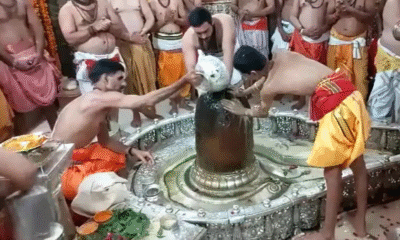Festivals
Nag Panchami 2025: Date & Puja Timing
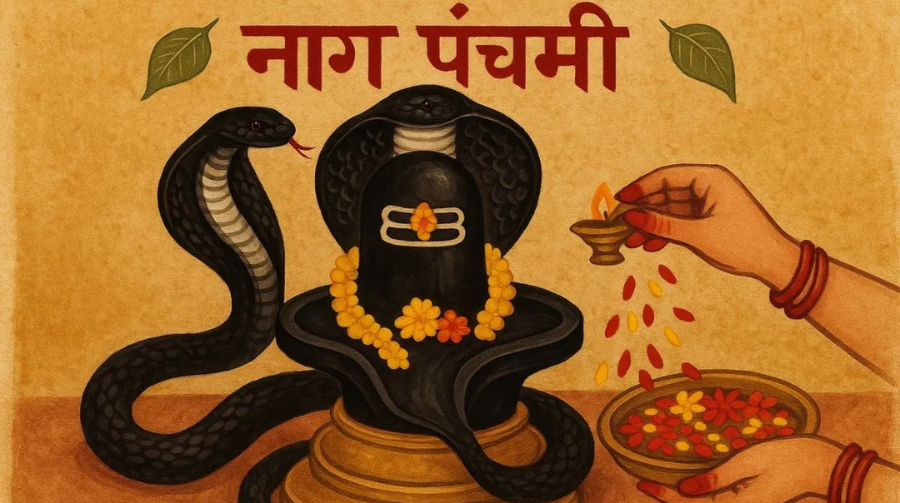
Nag Panchami isn’t just about offering milk to snake idols. It’s a rare blend of mythology, ecology, and devotion—reminding us to respect life forms that often evoke fear. As Nag Panchami 2025 arrives on Tuesday, July 29, it offers another opportunity to step into the spiritual and symbolic layers of India’s serpent tradition.
When is Nag Panchami 2025?
- Date: Tuesday, 29 July 2025
- Panchami Tithi Begins: 11:24 PM, 28 July
- Panchami Tithi Ends: 12:46 AM, 30 July
- Puja Muhurat: 5:41 AM to 8:23 AM, 29 July (Duration: 2 hr 43 min)
In Gujarat, due to calendar variations, Nag Panchami will be observed on 13 August 2025.
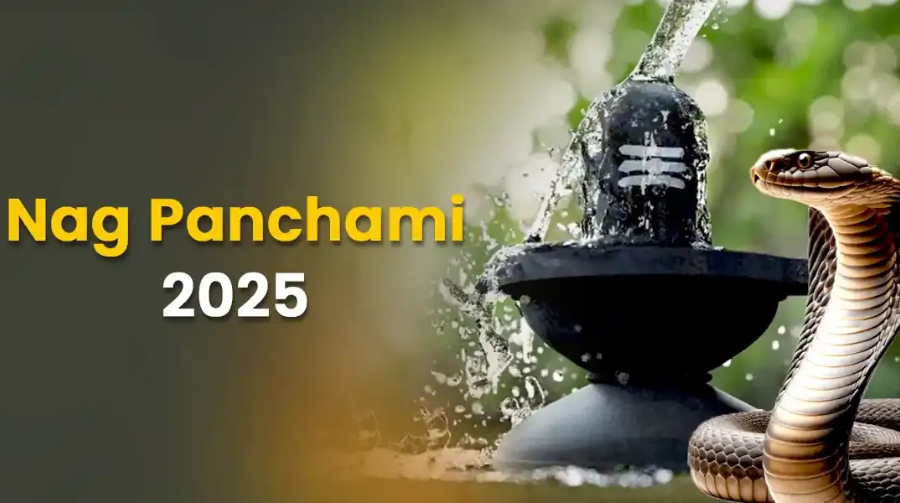
Why Do We Worship Snakes?
At first glance, snake worship may seem primitive—but it’s deeply symbolic:
- Snakes represent the dual nature of creation: death and rebirth. They shed skin, symbolizing transformation.
- In Hinduism, Nagas are guardians of wealth and fertility, and protectors of nature.
- Serpents are intricately connected to Lord Shiva (Vasuki), Lord Vishnu (Sheshnag), and Manasa Devi.
In mythology, the Sarpa Yajna initiated by King Janamejaya was stopped by Sage Astika on this day—marking the beginning of Nag Panchami as a festival of peace and reconciliation with serpents.
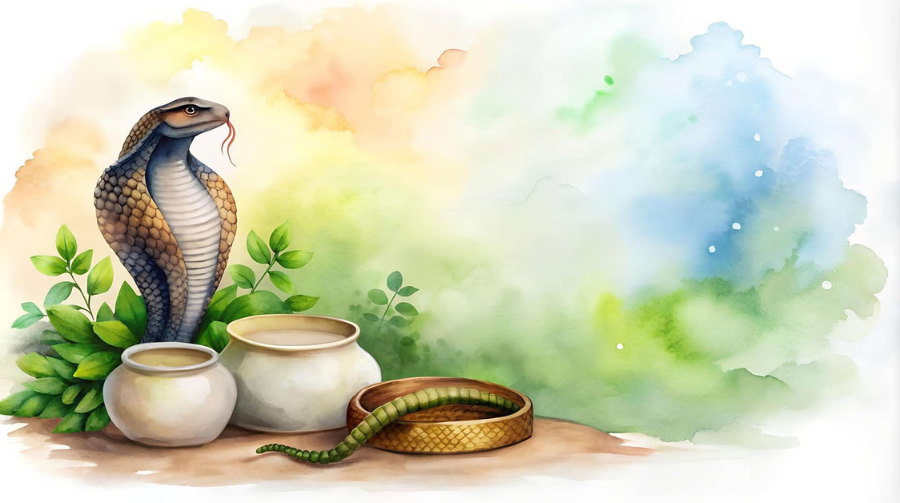
Rituals and How It’s Observed Today
Pre-Puja Preparation:
- Bathe early before sunrise.
- Clean the home and puja area.
- Draw snake symbols on walls or floor using turmeric, kumkum, or cow dung paste.
Offerings Include:
- Milk (preferably symbolic rather than offered to live snakes)
- White lotus, rice grains, sandalwood
- Sweets like laddoos and jaggery
- Durva grass and Nagkalika flowers
Key Practices:
- Avoid digging, ploughing, or cutting trees—signifying respect for the underground world.
- Fast partially or fully (milk and fruits).
- Recite mantras such as “Om Namah Nagabhyo” or “Sarpa Raksha Stotra”.
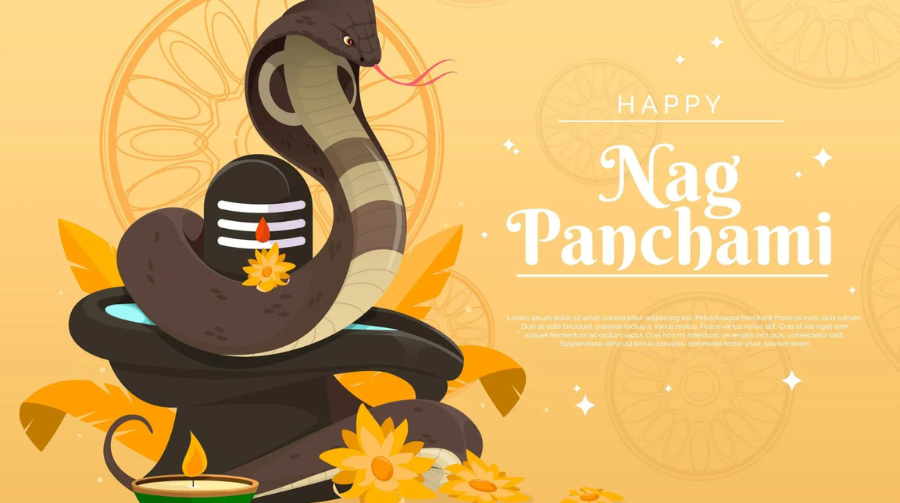
Regional Flavors of Nag Panchami
Maharashtra & Karnataka:
Snake idols are placed in shrines, and women pray for their brothers’ long life. Folk songs like Nagoba Bhagat are sung.
Tamil Nadu & Kerala:
Naga abhisheka is done in temples like Mannarasala, with turmeric milk and sesame offerings.
Bihar & Bengal:
Women make clay serpents, worship them near anthills or ponds, and seek protection for their families.
Nepal:
In Kathmandu Valley, Nag Panchami kicks off festivals like Gai Jatra. Snake motifs are hung over doorways for protection.
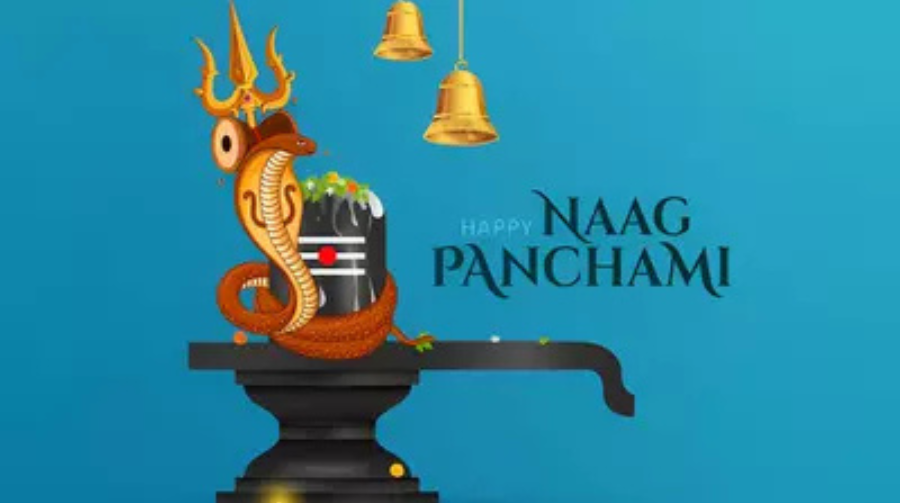
Symbolism Beyond the Ritual
In modern times, Nag Panchami speaks to more than tradition. It is:
- A call for ecological awareness—protecting snakes from deforestation and urban harm.
- A reminder of coexistence, with creatures we often fear.
- A meditative symbol, especially in yoga, where kundalini energy is envisioned as a coiled serpent at the spine’s base.
Festivals
Men’s Day 2025: Instead of wishes, here are 10 things every man truly deserves this year
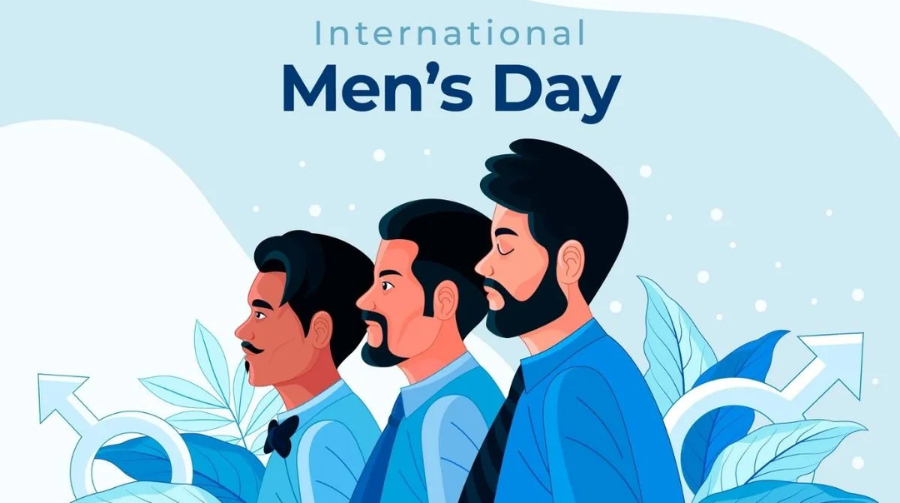
International Men’s Day 2025 brings with it something far more meaningful than short messages, forwarded quotes, or generic wishes. It offers us a moment — a pause — to look at the men in our lives with more warmth, empathy, and awareness. This day is not about celebrating stereotypes of strength, silence, or sacrifice, but about recognising men as complete human beings with emotions, complexities, fears, and dreams.
More than anything, this year calls for a gentler, kinder perspective toward the men we often expect to “hold it together,” even when they’re quietly breaking.
The fathers who solve everything but talk about nothing.
The brothers who say “I’m fine” because they don’t know how to say “I’m hurting.”
The partners who carry emotional storms behind calm smiles.
The sons who grow up learning that tears and vulnerability come with rules.
So this Men’s Day, instead of another “Happy Men’s Day” text, let’s offer men what they rarely receive — space, validation, emotional room, and unconditional appreciation.
Here are 10 things every man truly deserves in 2025:
1. The freedom to say, “I’m not okay.”
Men are conditioned to stay composed, no matter what. But everyone deserves moments of vulnerability without judgment. A man should have people around him who take his emotions seriously — not as a weakness, but as a sign of honesty and courage.
2. Friendships deeper than surface-level banter
Banter is fun, but every man deserves friends with whom he can share fears, insecurities, ambitions, and confusion. Real male friendships are often under-celebrated — and Men’s Day reminds us how vital they are.
3. A life where the pressure to “provide” isn’t a lifelong sentence
The expectation that men must shoulder financial and emotional responsibility alone is unfair and exhausting. Men deserve relationships — romantic and familial — where duties are shared, not silently assigned.
4. Permission to rest without guilt
Men are taught to measure their worth by productivity. But rest is not laziness. It is necessary, deserved, and overdue. Every man deserves to relax without feeling like he’s disappointing someone.
5. A childhood they’re allowed to keep
From hobbies to silly joys, men should be allowed to hold onto the things that make them feel alive. They deserve space to enjoy life beyond responsibility and routine.
6. Compliments that go beyond strength or success
Tell him he is gentle, thoughtful, warm, resilient, artistic, funny, creative, patient — anything that acknowledges who he is, not just what he does. Men deserve appreciation that reaches the heart.
7. Emotional safety in their closest relationships
Men should be able to express affection, softness, and fear without being shamed for it. Emotional safety is not optional; it is foundational to healthy living.
8. A world where tears are not forbidden
If society stopped policing men’s emotions, we’d create healthier families, healthier communities, and healthier men. Tears aren’t weakness — they’re release.
9. Healthcare — including mental health — that truly hears them
Men often ignore symptoms, delay treatment, or suppress emotional distress because they’re taught to “tough it out.” They deserve mental health support, routine check-ups, and spaces that encourage them to speak openly.
10. Love that sees the human, not the expectation
Every man deserves love that acknowledges his journey, growth, struggles, and imperfections — not love that rests on outdated ideas of masculinity.
A gentle reminder this Men’s Day
Let’s celebrate men not through wishes alone, but through compassion in daily life — by listening more, judging less, and allowing the men around us to show up as their authentic selves.
Happy International Men’s Day 2025 — to every man growing, healing, trying, and becoming.
Festivals
Navratri 2025: Devotees throng temples across India as nine-day festival begins | Videos

The nine-day Sharadiya Navratri festival began today with grand celebrations across India, as devotees gathered in temples to worship Goddess Durga and her nine divine forms. The auspicious festival, which symbolizes the triumph of good over evil, is marked with prayers, fasting, and cultural festivities such as Garba and Dandiya.
Devotees throng temples across India
From Delhi to Mumbai and Madhya Pradesh, temples were filled with spiritual fervor on the first day of Navratri 2025.
- Delhi: Large crowds gathered at Kalkaji Temple, Jhandewalan Temple, and the Shree Adya Katyayani Shaktipeeth Mandir in Chhatarpur, where morning aarti was offered with chants and devotional hymns.
- Mumbai: The historic Mumbadevi Temple witnessed the sacred Kakad Aarti ceremony, a traditional ritual marking the beginning of festivities.
- Madhya Pradesh: Thousands of devotees visited the famous Maa Baglamukhi Temple in Nalkheda, Agar Malwa district, believed to have links to the Mahabharata era, adding to its spiritual significance.

The significance of Navratri
Navratri is one of Hinduism’s most sacred and vibrant festivals, dedicated to worshipping the nine forms of Goddess Durga, collectively known as Navdurga. Each day is devoted to a different form of the Goddess, symbolizing aspects such as strength, courage, purity, wisdom, and compassion.
This year, Navratri begins with Ghatasthapana and the worship of Maa Shailputri on September 22, 2025, and will conclude on Vijayadashami (Dussehra) on October 2, 2025.
Devotees observe fasts (vrat), install a kalash at home or temples during shubh muhurat, chant mantras, and perform aarti seeking blessings for prosperity, health, and spiritual strength.
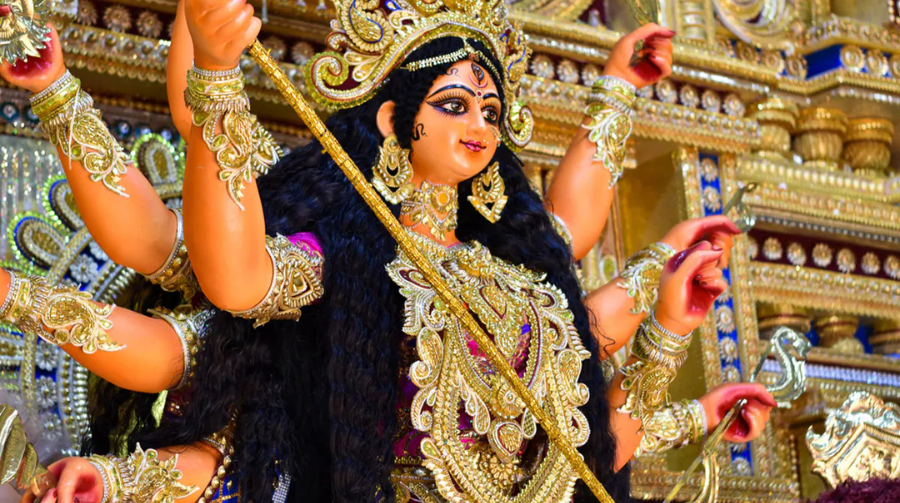
Navratri traditions and celebrations
- Fasting & Puja: Devotees abstain from grains and non-vegetarian food, offering fruits, sweets, and special vrat meals to the Goddess.
- Cultural festivities: In Gujarat and Maharashtra, traditional Garba and Dandiya nights bring communities together with colourful attire, music, and dance.
- Durga Puja Pandals: In West Bengal and eastern India, grand Durga Puja pandals are set up with artistic idols of Maa Durga, attracting lakhs of devotees.

A festival of unity and devotion
Navratri transcends regions, blending spirituality with cultural celebration. From the Himalayas to the coastal temples of South India, the Goddess is invoked with devotion and splendour, making Navratri not just a religious occasion but also a festival of togetherness, joy, and cultural pride.
Festivals
Navratri 2025 Outfit Ideas: Colours, Fabrics, Jewellery and Styling Tips

From twirling lehengas to pastel kurta sets, Navratri 2025 fashion is all about comfort with a stylish twist. Discover the perfect outfit ideas, colours, fabrics, and accessories to shine this festive season.
🌸 The Essence of Navratri Fashion 2025
Navratri is not just about devotion and dance; it’s also a celebration of culture, colours, and style. Each year, festive wardrobes evolve to blend tradition with modern trends, and Navratri 2025 is no different. Expect heritage weaves, bold hues, lightweight fabrics, and contemporary fusion wear that keeps you comfortable through Garba and Dandiya nights.
Fashion this season is about effortless elegance—vibrant yet breathable, traditional yet experimental.

👗 Navratri Outfit Ideas for Women
- Classic Lehengas with a Twist – Flowy lehengas paired with embroidered cholis and lightweight dupattas remain a timeless choice. In 2025, expect pastel tones, sequins, and cape-style dupattas for a modern touch.
- Co-ord Sets with Mirror Work – Mirror embroidery, bandhani prints, and bold colours bring energy to co-ord styles, perfect for those who love dancing without heavy layers.
- Fusion Silhouettes – Crop tops with ghagras, long jackets over shararas, or draped dupattas styled as capes offer the right mix of ethnic and contemporary.
- Pastel Kurtas & Palazzo Sets – For comfort with elegance, pastel-hued kurtas paired with embroidered palazzos or shararas are trending big.

👔 Navratri Outfit Ideas for Men
- Classic Kurta-Pajama – Opt for chikankari or silk kurtas in festive shades of red, yellow, or green, paired with contrasting pajamas.
- Indo-Western Jackets – Layer a Nehru jacket or embroidered bandhgala over a kurta to elevate the look.
- Casual Festive Wear – Pastel cotton kurtas with jeans or churidars strike the right balance between tradition and comfort.
- Printed Stoles & Dupattas – Accessories like a vibrant stole or bandhani dupatta can instantly uplift a plain kurta look.

🌈 Colours of Navratri 2025
Each day of Navratri has a symbolic colour. Designers suggest incorporating these shades into your looks to stay festive-ready:
- Day 1 – Yellow
- Day 2 – Green
- Day 3 – Grey
- Day 4 – Orange
- Day 5 – White
- Day 6 – Red
- Day 7 – Royal Blue
- Day 8 – Pink
- Day 9 – Purple
🪡 Fabrics to Choose for 2025
- Chiffon & Georgette – For lightweight drapes that flow beautifully while dancing.
- Silk & Banarasi Weaves – Rich fabrics for a regal and traditional appeal.
- Cotton & Linen – Comfortable options for warmer evenings, perfect for daily Navratri wear.
- Mirror & Bandhani Work – Adds sparkle and vibrancy to any outfit.

💍 Jewellery & Accessories
- Women: Silver oxidised jewellery, statement earrings, layered bangles, kamarbandh, and colourful juttis complete the festive look.
- Men: Brooches, embroidered mojris, pocket squares, and classy watches can add the right finishing touches.
✨ Styling Tips for Navratri 2025
- Keep your outfits lightweight if you plan to dance through Garba nights.
- Experiment with fusion wear to stand out while staying comfortable.
- Add pops of festive colour through dupattas, clutches, or jewellery.
- Don’t shy away from metallic shades like silver and gold for extra glamour.
-

 Celebrity Lifestyle7 months ago
Celebrity Lifestyle7 months agoEx-Cricketer Shikhar Dhawan Buys Ultra-Luxury Apartment Worth ₹69 Crore in Gurugram
-
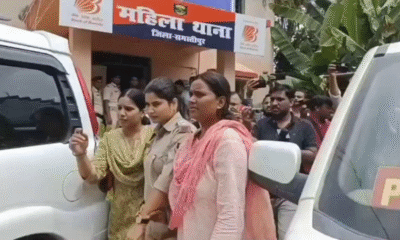
 Crime & Investigation4 months ago
Crime & Investigation4 months agoDelhi Police SI Neetu Bisht Caught Taking ₹20 Lakh Bribe – Shocking Details Emerge in Corruption Probe
-

 Glamour & Entertainment5 months ago
Glamour & Entertainment5 months agoTelegram Channels Disseminating Pro‑Russian Propaganda in Poland
-

 Business6 months ago
Business6 months agoAmazon sets 30‑day relocation deadline for corporate staff—opt out by resigning in 60 days
-

 Entertainment6 months ago
Entertainment6 months agoAbhijeet & Dr Tarika Reunite in CID 2 — Fans Say ‘Clear the Misunderstanding Now
-

 Bollywood4 months ago
Bollywood4 months agoNo ₹3 Lakh Fine or 2-Year Jail: The Truth Behind the ‘Hakla’ GIF Buzz
-

 Celebrity Lifestyle6 months ago
Celebrity Lifestyle6 months agoMaha Kumbh Girl Monalisa seen in car allegedly worth ₹1 crore
-

 Education6 months ago
Education6 months agoNEET UG Controversy Explained: Paper Leak, Impersonations & Ongoing Probe

